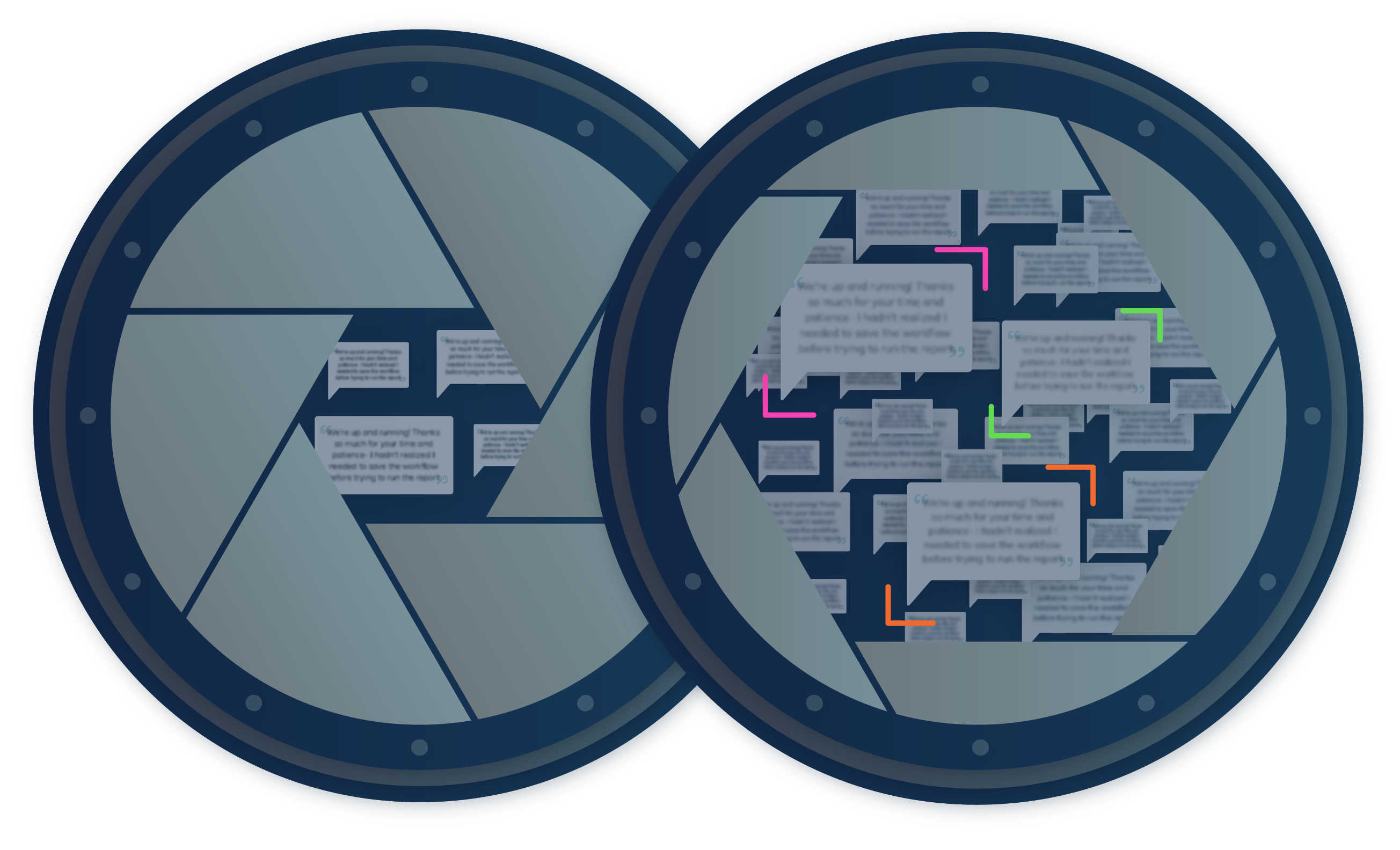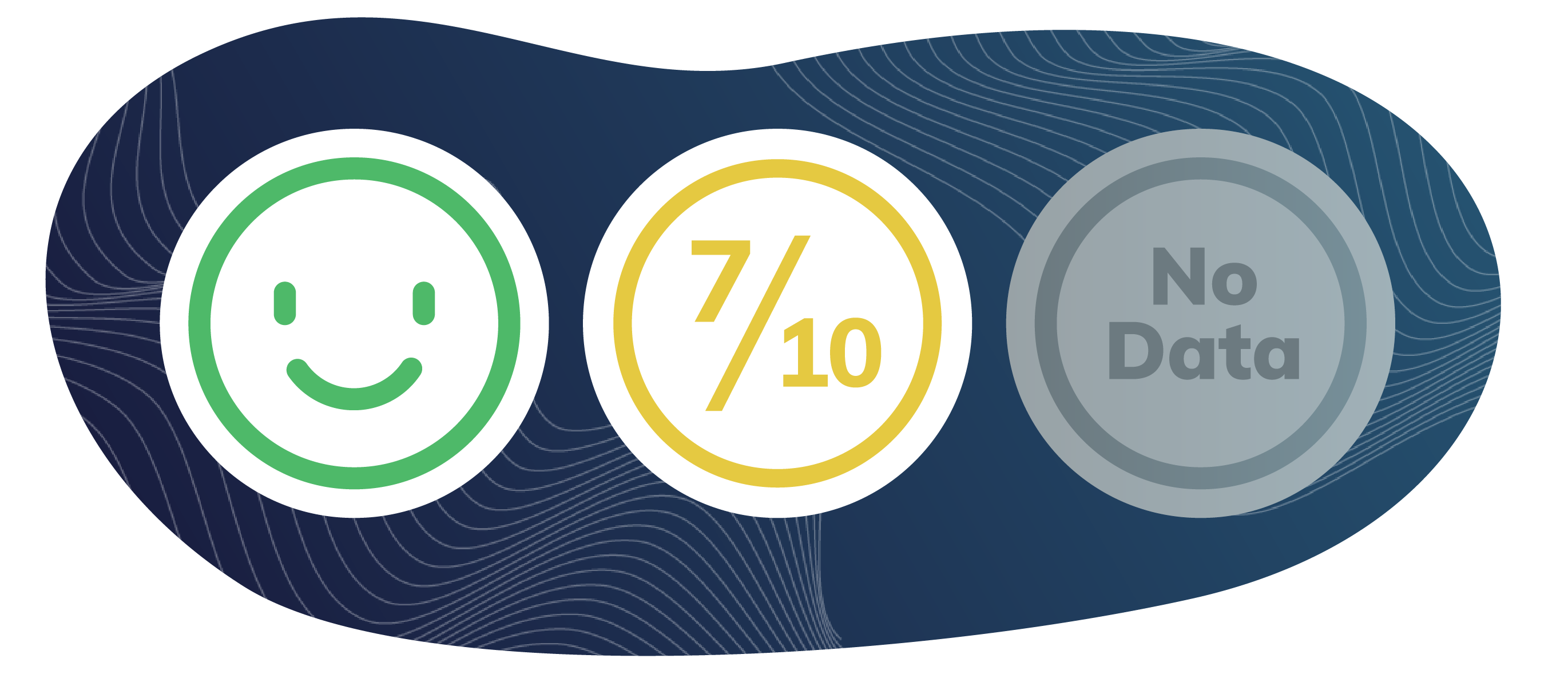Sentiment analysis has become quite the buzzword in the CX community, and with good reason. It’s never been more important to understand customer sentiment, and failing to do so brings unfortunate consequences.
Ideally, sentiment analysis exercises carefully examine your customer interactions to determine relationship health and surface relationship risks so that you can take action where and when it matters. Many companies have long looked to surveys as a proxy for customer sentiment. However, increasing pressure to improve customer experience has illuminated the shortcomings of surveys as a standalone approach. As a result, more companies embrace AI, specifically Natural Language Understanding technology (“NLU”) to help them understand customer sentiment from their unstructured organic customer feedback. The transformation is already underway; according to NTT’s 2020 Global Customer Experience Benchmarking Report, 77% of enterprises believe customer operations, including Voice of the Customer, will be positively affected by AI. The technology offers organizations an incredible opportunity to better understand customer sentiment, but sentiment analysis tools are not created equal. Here are seven things to know about achieving optimal results with AI-powered sentiment analysis.
1. Sentiment Analysis Thrives on Scale
Imagine you’re under doctors’ orders to log everything you consume to identify the source of a potential allergy.You log the salad you had for lunch but forget to log the mid-afternoon salty snack attack and the cocktails you enjoyed later in the evening. Your doctor is going to have a tough time diagnosing and treating your allergy without the full picture!
The primary advantage of using AI-based sentiment analysis is its ability to analyze large volumes of unstructured data that would otherwise be infeasible. Simply applying AI to a small set of unstructured comments that accompany your survey results might save you time in the short term, but carries massive opportunity cost and can mislead decision-making by excluding the vast majority of your customer feedback from organic channels like support cases and webchat — opening the aperture to apply sentiment analysis to all of your customer feedback solves this.

Just like your doctor, how can we expect sentiment analysis to yield reliable, actionable analysis without the full picture? Unifying all of your sources of customer feedback, organic and solicited, for holistic sentiment analysis will generate the most relevant, accurate insights you can confidently prioritize across. The smartest algorithms in the world won’t produce relevant insights without a representative volume of high-quality data to power them. And from an ROI perspective, using sentiment analysis only on survey comments is like using a forklift to move a feather when there’s a pile of cinderblocks in your way.
2. Sentiment Needs to Be Measured Consistently
What do you get when you combine a smiling emoji, a 7 out of 10, and a “no response”?

Deloitte says that customer feedback can be spread across as many as 23 different channels. Many have built-in surveys — some simply offer a choice to rate your experience as “good” or “bad,” some feature different numerical or emoji scales. But, of course, many customers do not respond to surveys. For a holistic view of your customer experience, it’s important to choose a sentiment analysis tool that can calibrate existing ratings from disparate systems into a consistent format and project normalized ratings across unrated customer interactions based on your organic customer interactions. The best sentiment tooling will apply consistent measurement to all of your interactions, regardless of the channel or source, or whether or not a survey was answered.
3. Turnkey CX Moment Recognition Yields the Best Results
If you’re specifically focused on preventing churn or recognizing upsell potential, broadly painting customer sentiment as “positive” and “negative” won’t cut it. “Negative” sentiment doesn’t necessarily mean the customer is going to churn, just as “positive” sentiment doesn’t necessarily mean it’s time to upsell. It’s more useful to know what types of positive and negative interactions are occurring — for example, are negative interactions resulting from customer confusion about routine issues, or something serious that should be escalated? The best sentiment tooling will use trends to predict what kinds of negative and positive instances lead to certain outcomes, in the context of your business.
4. Theme Discovery is an Essential Force Multiplier
Imagine two interactions labeled with negative sentiment. One is labeled negative because the customer was briefly confused by an outdated knowledge base article. The other is labeled negative because a bug in your reporting system caused the customer to report inaccurate KPIs to their Board, and now they have to backtrack. By adding additional structure to unstructured data, theme discovery enables you to gauge the severity of interactions like this and differentiate between them. In these examples, theme discovery detects what the customer is reacting to. Sentiment analysis and theme discovery work in tandem to help you rapidly identify friction drivers in your customer experience.
.png)
Even more important than knowing whether customer sentiment is positive or negative is knowing what is driving that sentiment. If you aren’t clear on what’s driving your customer experience, how do you know what to fix or what you should do next?
5. Clarity Often Requires Customization
There are seemingly boundless applications for NLU — many public APIs tout upwards of 20 potential application areas. In order to extract clear next best actions from the analysis, CX leaders are best served by models that are specifically tuned for CX use cases. Even when evaluating CX-specific tools, customization is a critical element of minimizing time to value. Many of these tools flaunt entirely unsupervised models, which can be great, but will you have the opportunity to adjust the model logic if you don’t agree with the output? If so, how will you be enabled to do so, and at what cost to you? Let’s look at the below example.
.png)
Most unsupervised natural language models would dismiss the word “degraded” as highly negative. But in this instance, the customer is describing a routine issue with an easy fix. Otherwise, “negative sentiment” would become incredibly noisy and any relevant alerts risk losing their credibility, masking issues that do represent real customer relationship risks.
6. The Output Is Information, Not Insight, Without Flexible, High-Quality Reporting
Another critical determinant of time to value is reporting quality. Most CX leaders want to report on dimensions that are most impactful to their business — for example, top product issues that cause negative sentiment or sentiment by customer contract value or channel. Public API sentiment analysis tools are unlikely to come with useful reporting attached. However, most CX-specific sentiment analysis tools cannot facilitate this kind of reporting. Without a dedicated data team or an integration to your data warehouse or internal BI tooling, it will be difficult to get reporting based on the dimensions you care about. Whereas AI is supposed to solve for manual effort, without a flexible reporting interface, you may end up with more manual last-mile effort than you bargained for.
7. Intelligent Infrastructure Makes Sentiment Analysis Actionable
One of the beautiful things about AI-powered sentiment analysis is that it can happen in real-time. But without a clear path to activating sentiment insights, even the most brilliant findings will wither away on the too-hard pile. A key application of intelligent infrastructure is smart integration that allows every team to adapt to customers with speed and precision. For example, the ability to set thresholds and trigger alerts that deliver actionable insight, not noise, to let stakeholders know when and why they need to take action — you can alert a Customer Success Manager to a support interaction that’s going sideways, and a Product Manager to multiple customer complaints this week about a buggy feature release. On its own, even the most sophisticated sentiment analysis won’t help you understand and improve your customer experience without the infrastructure to support it.
Learn more about the 5 benefits of using AI to measure customer sentiment.


